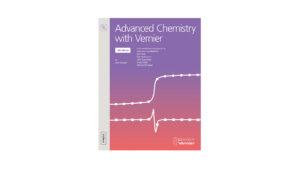Introduction
Chromatography is a process used to separate the components of a mixture. A mixture is injected into a chromatography column, where it lands on a substrate, also known as the stationary phase. The stationary phase may be polar, attracting polar substances, or nonpolar, attracting nonpolar substances. When a mixture is injected into a chromatography column, the substances in the mixture cling to the stationary phase. Next, a solvent is injected into the column. The solvent is called the mobile phase. As the solvent moves along the stationary phase, it will carry the components with it. When and how quickly the substances are carried out of the column by the solvent depends on the polarity of the substances and their solubility in the solvent. If the solubilities and/or polarities of the individual parts of the mixture are significantly different, the substances in the mixture will separate from each other as the mixture travels along the substrate. The substance that is the most strongly attracted to the solvent will be the first to leave the chromatography column. The substrate (stationary phase) and the solvent (mobile phase) can be in any phase, depending on the properties and concentrations of the components in a given mixture. Therefore, there is solid, liquid, and gas chromatography.
In this experiment, you will use liquid chromatography to separate the dyes, FD&C Blue and FD&C Red that are found in grape-flavored Kool-Aid®, from the other ingredients in the dry drink product. You will use a special column, called a C18 Sep-Pac® for the experiment. This column contains a silica solid with a C18 hydrocarbon bonded to it, which renders the solid nonpolar.
Objectives
In this experiment, you will
- Conduct an isocratic, liquid-chromatographic separation.
- Conduct a step gradient, liquid-chromatographic separation.
- Complete the necessary measurements and calculations to evaluate the components of a mixture that have been separated by liquid chromatography.
Correlations
Teaching to an educational standard? This experiment supports the standards below.
- International Baccalaureate (IB) 2025/Chemistry
- Structure 2.2.10—Chromatography is a technique used to separate the components of a mixture based on their relative attractions involving intermolecular forces to mobile
Ready to Experiment?
Ask an Expert
Get answers to your questions about how to teach this experiment with our support team.
- Call toll-free: 888-837-6437
- Chat with Us
- Email support@vernier.com
Purchase the Lab Book
This experiment is #18 of Advanced Chemistry with Vernier. The experiment in the book includes student instructions as well as instructor information for set up, helpful hints, and sample graphs and data.

